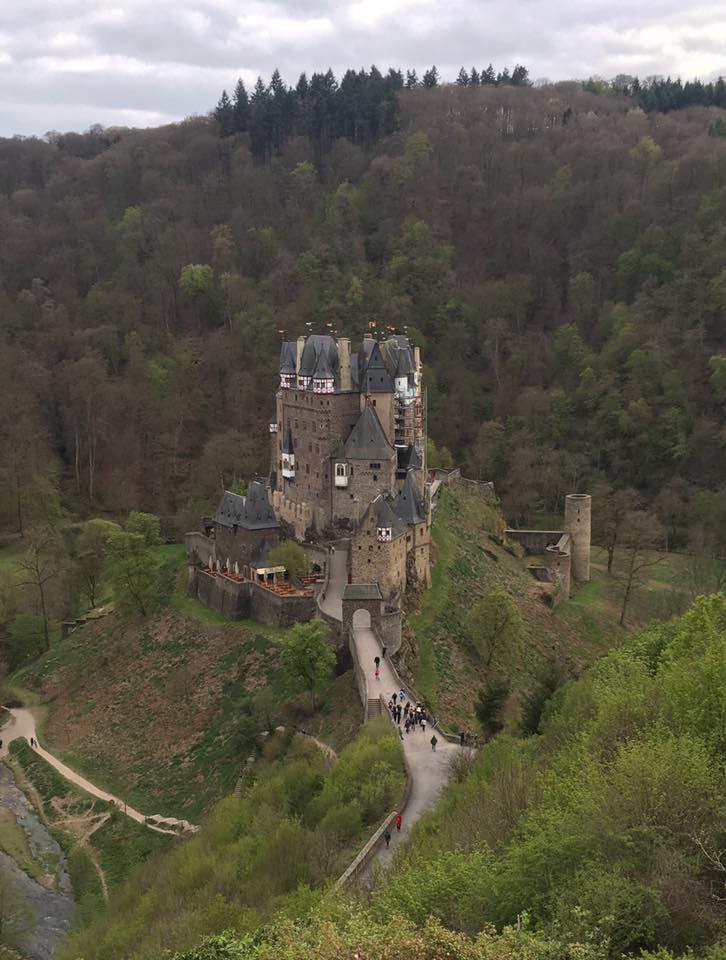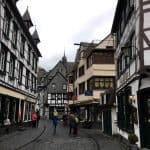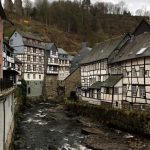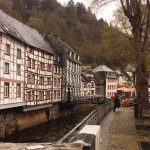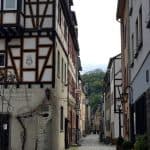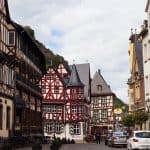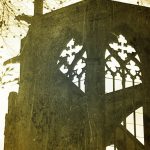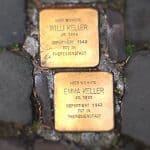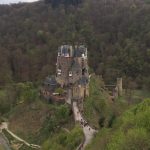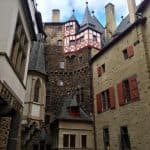by George de Bruin
When one tackles Europe, there are definitely three types of attractions on your list: art museums, cathedrals and maybe a castle or two. Art museums are normally limited to the most well-known, such as the Louvre in Paris or the Rijksmuseum on Amsterdam. Neuschwanstein, Versailles and Chambord are without a doubt at the top of the list of castles and palaces (and maybe even the grey, unimaginative Buckingham Palace). The Notre Dame in Paris, Westminster Abbey in London and the Sagrada Familia in Barcelona are kings among other cathedrals.
And yet – sometimes one wants to escape these tourist traps and experience something of the bygone days of Europe. We encountered three such medieval treasures in Germany.
Monschau in the Eifel region close to Aix-le-Chapelle (Aachen in German and Aken in Afrikaans)
This sweet little town appeared in written documents in 1198. Driving along a lazy mountain pass through hills and valleys, you first see a few houses to your left. Then follows a large hotel and an enormous parking area where you can leave your car (the little streets further on are very cramped up, although two or three competent Germans actually navigated their huge Mercedes Benzes skilfully through these narrow alleys!). Then you start walking (take along hiking shoes, as the cobbled streets do not guarantee an effortless stroll!) – and suddenly, around the next bend, pretty timber-framed houses (photo 1) greet you, each one older than your family’s secret pancake recipe! The cutest antique shops, eateries and even toy shops invite you to spend your last euros as quickly as possible. Somewhere along the way, a river (a favourite spot among trout fishers) finds its way between the houses, and all along the river the gorgeous architecture repeats itself (photos 2 and 3). And quite unexpectedly, the town also boasts a little protestant church!
Relax on the town square under warm woollen blankets (if it is winter) and sample the local beer. The traditional food compels you to lick your fingers long after it has been devoured.
Although a rainy day greeted us, we enjoyed every moment. It is said that the town is even better on sunny days. Next time, we will visit over Christmas, as the town’s Christmas Market is known far and wide. Adieu until December, Monschau!
Bachanach on the banks of the Rhine
A few kilometres upstream from the Lorelei (on the banks of the Rhine, therefore) is nestled the gorgeous little hamlet of Bachanach, one of the lucky towns that escaped the Second World War’s bombardments. What makes this town quite interesting is the various gateways through which one approaches it. At one of these gates every single flood since the times of Noah are recorded. It is actually a miracle that the town has never been swept away completely!
Just like Monschau, Bachanach boasts many true and real medieval timbre-framed houses (photos 4 and 5). Some buildings are so skew that you don’t even want to walk next to it!
Two things reminded of the Jewish Holocaust. The first is an impressive ruin: The Werner Chapel (photo 6) commemorates a very sad event of the 13th century when a German boy, Werner, was apparently killed by Jews. This murder resulted in a pogrom during which at least 40 Jews were killed. It is actually fitting that the chapel, which was to have been built into a cathedral, was never completed and today resembles a skeleton. The second little piece of memorial is much smaller, inconspicuous and, to me, more tragic. In one of the side alleys, two cobbles in front of a picturesque house were removed and replaced with two copper cobbles (photo 7). These bear the names of two people from Bachanach who lived in that house but lost their lives in the Theresienstadt Concentration Camp during the Holocaust.
May these two reminders remind us for ever that no live is worth more or less than another, and that no race is superior to another.
Burg Eltz
What is a trip along the Rhine without a visit to a Rhineland castle? Already in South Africa we have decided to visit this off-the-beaten-track castle. The 33rd generation of Eltzes live there – the first generation had built the castle in the 12th century already. And very interesting: this is one of only three castle to the left of the Rhine in the Rhineland Palatinate that were not destroyed.
What makes this castle so different? It was built by ordinary people who could not afford to each built their own castle. These conglomerates of castles therefore housed more than one family, and in the case of Burg Eltz three families (more than 100 people) over many generations simultaneously resided in the castle (photo 8). The inner courtyard (photo 9) offers an interesting perspective on this cohabitation with many a door leading to different parts of the castle – and be careful not to go via your mother-in-law’s sitting room to your own!
It boasts wonderful examples of Renaissance art and furniture, as well as two almost running lavatories! The restaurant on the outside serves the most delicious local beers that I have ever tasted in the Palatinate!
Until next time!
(Photos: Dirk Scholtz, George de Bruin and Steven van Herk)



